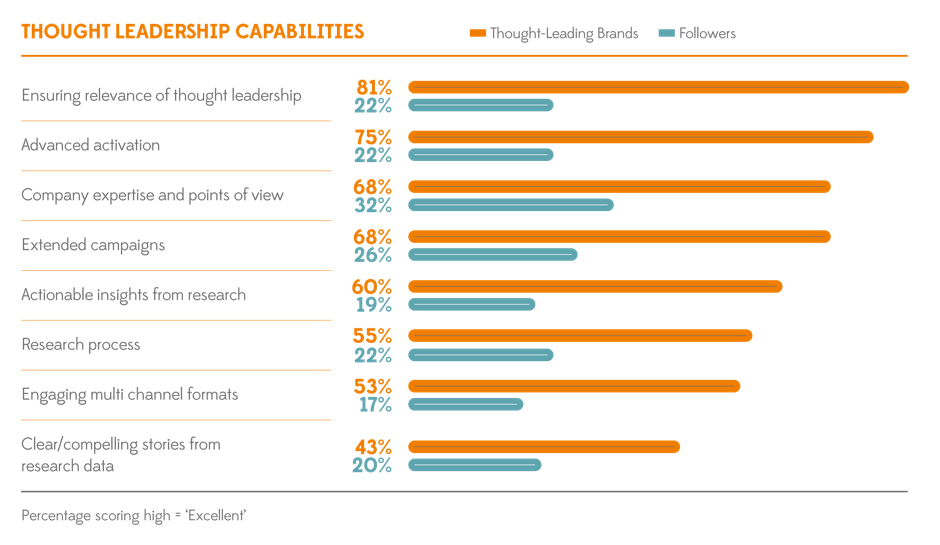How to be a Thought-Leading Brand: Five steps to a successful campaign strategy
In recent years, corporate communications budgets have been redirected from traditional advertising and PR activity towards insight-led marketing that allows companies to build more rewarding relationships with their audiences.
But as insight-led marketing – thought leadership – has gone mainstream, brands have found that it’s harder to stand out from the crowd.
Business audiences are increasingly discerning: they’ll only engage with content that looks too important to ignore. To stand any chance of getting noticed, your topics and campaigns need to be original, insightful and backed up by robust and genuinely insightful research.
And we’re seeing a major change in the way brands engage with their audiences. The most successful companies are creating digital-first campaigns, adopting content marketing techniques and platforms, and getting much more systematic about measuring ROI.
So the bar for success is rising. High-quality, impactful thought leadership demands specialist skills: research expertise, editorial and storytelling skills, and rigorous campaign-planning and activation. The marketing function is being reshaped, with companies investing in new tools and capabilities in order to stay at the cutting edge.
Who are the thought leaders?
It’s against this backdrop that we set out to discover what constitutes best practice in thought leadership.
Our survey of 360 executives who conduct thought leadership identifies a group of organisations that outperform their peers by a factor of four or more. We call this group the Thought-Leading Brands. They excel at both the planning and the execution of thought leadership campaigns, and as a result are many times more likely than other brands to achieve substantial returns on their investments.
So what’s the recipe for success? The Thought-Leading Brands show that it starts at the outset – with strategy and planning.
Getting the strategy right
Companies are rethinking the thought leadership model as they grapple with digital, try to increase engagement with their audiences, and try to use insight to improve revenues.
These challenges are forcing B2B marketers to plan better. The Thought-Leading Brands are investing in new skills and tools to improve their campaign-planning, and other organisations can ensure they get the maximum value from their thought leadership programmes by following their lead.
Here are five steps to successful campaign strategy and planning:
1. Conduct a content audit
For organisations that publish a lot of content, there is always the risk of duplicating stories – or, even worse, publishing conflicting points of view. A thorough review of your existing content assets and careful management of the editorial calendar will optimise your publishing activity. The majority of Thought-Leading Brands (58%) always conduct a content audit before starting any new project.
2. Seek out the white space
Do you know what your competitors are saying? Over half of the Thought-Leading Brands (53%) always evaluate their plans against their competitors’ content to ensure there’s differentiation.
3. Involve your clients
Don’t guess; ask your clients what they really want to know. Sixty percent of the Thought-Leading Brands test topics with their target audiences.
4. Plan your activation strategy
It sounds stupid, but so many companies put all their planning into the research, and how they take it to market becomes an afterthought. Not so for the Thought-Leading Brands: three out of four always start out with a clear plan for activation.
5. Workshop the story
Get the top team on board. The Thought-Leading Brands are more likely than other brands to get their senior execs behind their campaigns (42% compared with 33%).







 Back
Back

 Book a meeting
Book a meeting
 Book a meeting
Book a meeting

